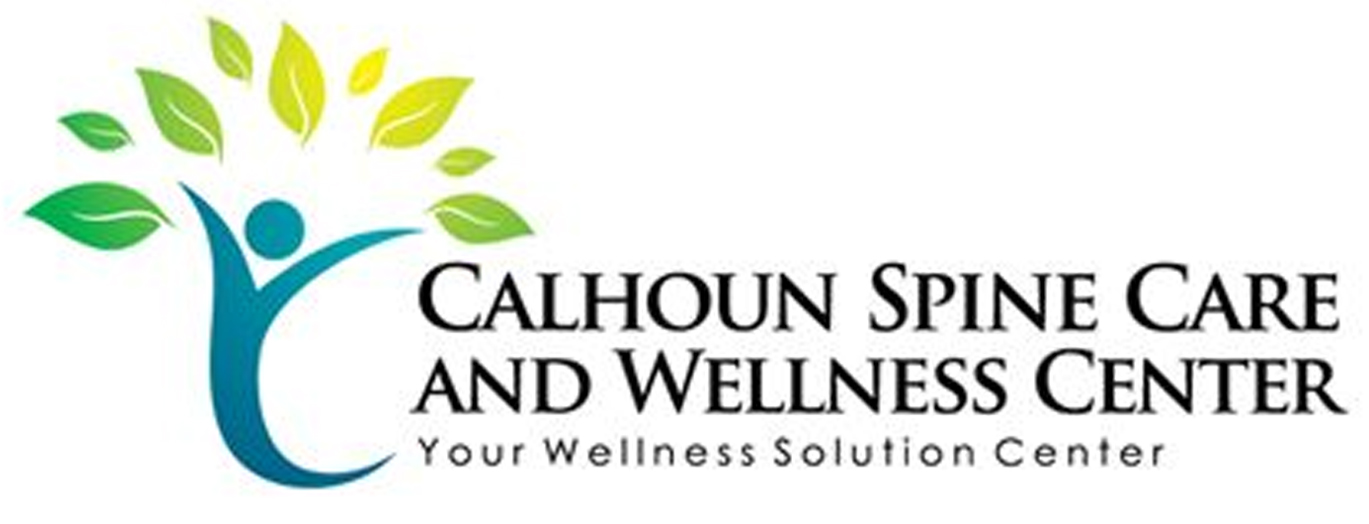As a local chiropractor, I understand that many of you have likely experienced that persistent upper back pain at some point in your life, and it can significantly impact your daily activities. The first step toward finding relief is understanding the root cause of your discomfort—whether it's due to poor posture, muscle tension, or even stress.
In my practice, I often emphasize the importance of exploring effective solutions such as specific stretching exercises and ergonomic adjustments to your workspace. These strategies can lead to remarkable improvements in how you feel. However, I want to highlight that if these initial approaches don't bring you the relief you're seeking, there's a lot more to consider on your path to a pain-free back.
Chiropractic care offers a natural, holistic approach to healing that many people are unaware of. By assessing your spine and nervous system, we can identify misalignments that may be contributing to your discomfort. Gentle adjustments can help restore proper alignment, improving your overall function and reducing pain.
I encourage you to take a proactive approach to your health. Together, we can explore various treatments and lifestyle changes that might surprise you in their effectiveness. Remember, you don't have to live with that nagging pain—there are natural solutions available that can help you feel your best.
Understanding Upper Back Pain
As a local chiropractor, I understand how frustrating it can be to deal with upper back pain, especially when it starts to interfere with your daily life. Whether it's making it hard to sit at your desk, lift everyday items, or enjoy your favorite pastimes, upper back pain can take a toll on both your body and mind.
First, let's talk about the upper back, or thoracic spine, which is made up of twelve vertebrae. This area is designed to provide stability and support, but when it becomes strained or injured, it can lead to discomfort and pain. You might feel tightness, stiffness, or even sharp pain that can radiate to your shoulders or neck. These sensations are often the result of muscle overuse, poor posture, or stress in your life.
It's important to recognize that upper back pain can also affect your emotional well-being, leading to feelings of frustration or anxiety about your health. At my practice, I emphasize the connection between physical and emotional health, and how addressing one can positively impact the other.
To effectively manage upper back pain, we first need to evaluate your posture habits. Are you slouching while working at your computer or hunching over your phone? Making small adjustments in your daily habits can significantly reduce the strain on your back.
Additionally, I recommend incorporating gentle stretches and specific strengthening exercises into your routine. A strong core is essential, as it helps support your upper back and improves overall posture.
Rest is another key component of recovery. It's essential to allow your body the time it needs to heal, particularly if you've been pushing through discomfort. By understanding the underlying causes of your upper back pain and applying natural healing techniques, you can take proactive steps towards regaining control of your daily activities and improving your overall health.
If you're curious about how chiropractic care can help alleviate your upper back pain, I invite you to explore the benefits of natural healing and discover how we can work together to enhance your well-being.
Common Causes of Discomfort
As your local chiropractor, I want to shed light on some common causes of upper back discomfort that you mightn't be aware of.
One significant factor is poor posture habits, which can greatly impact how you feel on a daily basis.
It's also important to consider that muscle tension plays a crucial role in your overall comfort.
By recognizing these underlying issues, you can take the first step towards finding natural relief and improving your well-being.
Understanding these factors is essential on your journey to better health, and I'm here to guide you through it.
Poor Posture Habits
As a local chiropractor, I often see patients who are unaware of the impact that poor posture habits can have on their overall health, particularly in relation to upper back discomfort. Many of us have developed habits that promote misalignment in our bodies, often without even realizing it.
For instance, you may find yourself slouching at your desk, leaning forward to get a better look at your computer screen, or hunching over your smartphone. These positions can place significant strain on your upper back muscles and spine, making them more vulnerable to pain and tension.
When you sit for extended periods without adequate lumbar support, it's all too easy to let your shoulders droop and your head jut forward. This misalignment not only creates pressure on your upper back but can also extend to your neck and shoulders.
Additionally, carrying heavy bags on one shoulder can lead to muscle imbalances that exacerbate discomfort.
Believe it or not, even your sleeping position can influence your spinal health. Sleeping on your stomach can twist your neck and spine, often resulting in morning stiffness.
As your chiropractor, I encourage you to be mindful of your body's alignment throughout the day. By recognizing and addressing these poor posture habits and making small adjustments, you can significantly reduce your risk of upper back discomfort and support better overall spinal health.
Muscle Tension Factors
As a local chiropractor, I want to share some insights into how certain everyday habits can lead to muscle tension, particularly in the upper back. Many people may not realize that poor posture is a significant contributor to discomfort. When you find yourself slouching or hunching over your desk, your muscles are forced to work harder to support your head and shoulders, which can create unnecessary strain.
Over time, this tension can build up, resulting in stiffness and pain that can affect your daily life.
Another important factor to consider is stress. When we experience stress, our bodies often respond by tensing up, and you mightn't even notice that you're holding your shoulders tightly or clenching your jaw. This constant muscle tension can take a toll on your upper back, leading to discomfort that can be distracting and uncomfortable.
Lack of movement is also a critical factor. If you spend long hours sitting without taking breaks, your muscles can become fatigued and tight. It's essential to incorporate regular stretches and movement into your routine, as this can help alleviate tension and enhance your overall comfort.
Lastly, I want to emphasize the importance of proper lifting techniques. When lifting objects, always remember to use your legs and keep your back straight. This simple adjustment can prevent unnecessary strain and tension in your upper back.
By addressing these factors—posture, stress, movement, and lifting techniques—you can significantly reduce discomfort in your upper back and improve your overall well-being.
If you're experiencing persistent pain or tension, I encourage you to reach out for a consultation, as chiropractic care can help support your body's natural healing processes.
Importance of Good Posture
As a chiropractor, I want to emphasize that good posture isn't just about exuding confidence; it plays a crucial role in your overall health and well-being. When you maintain a straight posture, you help align your spine properly, which in turn reduces strain on your muscles and ligaments. This alignment is vital for preventing discomfort and pain in areas such as your upper back, neck, and shoulders.
Conversely, poor posture can lead to muscle imbalances and chronic pain, making even the simplest daily activities feel burdensome.
You may not be aware, but your posture significantly affects a variety of bodily functions, including your breathing, digestion, and even your emotional state. Slouching can compress your lungs, leading to reduced oxygen intake and feelings of fatigue. On the other hand, standing or sitting up straight allows for deeper breaths and can enhance your energy levels.
You'll notice that adopting an upright posture with an open chest can't only uplift your mood but also bolster your confidence.
In our modern world, where many of us spend extended periods hunched over screens, being mindful of our posture is more important than ever. As a chiropractor, I encourage you to make simple adjustments throughout your day to improve your posture.
For example, when sitting, ensure your feet are flat on the floor and your back is properly supported. If you're standing, try to distribute your weight evenly across both feet.
By incorporating these practices into your daily routine, you can greatly enhance your posture, leading to better health outcomes and a more vibrant life.
Stretching Exercises for Relief
As a chiropractor, I often see patients struggling with tension in their upper back, even when they're mindful of their posture. It's important to understand that incorporating stretching exercises into your daily routine can be incredibly beneficial for relieving discomfort and enhancing flexibility.
Let's start with a simple yet effective stretch called the Shoulder Blade Squeeze. Whether you're sitting or standing, pull your shoulder blades together and hold this position for five seconds. Repeat this five times; it's a great way to ease tension in the upper back.
Next, I recommend the Upper Back Stretch. While seated, extend your arms in front of you, and gently round your upper back by pushing your hands away. Hold this position for 15-30 seconds while taking deep breaths. This not only stretches the upper back but also promotes relaxation.
The Neck Release is another valuable stretch. Sit comfortably and gently tilt your head to one side, bringing your ear towards your shoulder. Hold for 15-30 seconds, then switch to the other side. This stretch can help alleviate tightness in both your upper back and neck, which are often interconnected.
For those looking to enhance mobility, the Cat-Cow Stretch is an excellent choice. Get on all fours, arch your back upward while tucking your chin to your chest (this is the Cat position), and then lower your belly while looking up (the Cow position). Alternate between these two movements for about 30 seconds, and you'll likely feel a pleasant release in your spine.
Finally, I encourage you to try the Child's Pose. Kneel on the floor, sit back on your heels, and stretch your arms forward on the ground. Hold this position for 30 seconds, allowing your upper back to relax and release any built-up tension.
By regularly practicing these stretches, you can maintain a more relaxed and pain-free upper back. Remember, chiropractic care is about empowering you to take control of your health through natural healing techniques.
If you have any questions or need further guidance, please feel free to reach out. Your well-being is my priority!
Strengthening Your Upper Back
As a local chiropractor, I want to share with you the importance of strengthening your upper back for overall wellness. Focusing on targeted exercises can significantly enhance the strength of these muscles, which is crucial for maintaining good posture and preventing discomfort.
Good posture not only supports your spine but also contributes to your overall health.
Let's dive into some effective exercises and tips that can help you build a stronger and healthier upper back. These practices aren't just about building muscle; they're also about fostering a holistic approach to your well-being.
By incorporating these exercises into your routine, you can improve your posture, reduce tension, and enhance your quality of life.
Effective Exercises Recommended
As a local chiropractor dedicated to your well-being, I want to emphasize the importance of strengthening your upper back. Not only does it contribute to better posture, but it can also help alleviate discomfort you might be experiencing. Incorporating targeted exercises into your routine can build the necessary strength and stability.
One effective exercise I recommend is the bent-over row. You can begin by grabbing a pair of dumbbells. Bend your knees slightly and hinge at your hips. As you pull the weights toward your torso, focus on squeezing your shoulder blades together before lowering them back down. This movement helps activate and strengthen the upper back muscles.
Another excellent exercise is the reverse fly. Stand with your feet hip-width apart while holding dumbbells. Hinge at your hips, ensuring your back remains flat. With a slight bend in your elbows, raise the weights out to the sides, again squeezing your shoulder blades together. Lower and repeat this motion to enhance upper back strength.
Additionally, I recommend trying the wall angel. Stand with your back against a wall, positioning your feet a few inches away from it. Press your lower back against the wall and raise your arms to form a "W" shape. Slowly slide your arms up to create a "Y," maintaining contact with the wall throughout the movement. This exercise promotes proper alignment and mobility in your upper back.
Lastly, don't overlook the superman exercise. By lying face down and lifting your arms and legs off the ground simultaneously, you engage your back muscles. Hold this position for a few seconds before lowering back down. This exercise is a fantastic way to strengthen your upper back effectively.
Importance of Good Posture
As your local chiropractor, I want to emphasize the vital role that upper back strength plays in maintaining good posture. Strong upper back muscles are essential for keeping your spine aligned, which significantly reduces the risk of slouching and discomfort.
Good posture goes beyond just standing tall; it involves the even distribution of your body weight, which can help alleviate strain on both your neck and lower back.
Many people may not realize that poor posture can lead to a variety of issues, including chronic pain, limited mobility, and even fatigue. By focusing on strengthening your upper back, you're not only improving your posture but also enhancing your overall well-being.
When your upper back muscles are functioning effectively, they work to counterbalance the forces that pull your shoulders forward, allowing you to maintain a neutral spine.
Incorporating specific exercises into your routine that target the upper back—such as rows or reverse flys—can lead to noticeable improvements. As your upper back strength increases, you may find that your posture improves, and you feel more energized throughout your day.
I encourage you to prioritize building this strength, as the benefits of good posture extend to both your physical and mental health. If you have any questions about exercises or how chiropractic care can support your posture, please feel free to reach out.
Ergonomic Workspace Setup
As a local chiropractor, I want to emphasize the importance of creating an ergonomic workspace setup to help prevent upper back pain and enhance your overall comfort while working.
It's essential to start with your chair: adjust it to provide adequate support for your lower back. Your feet should rest flat on the ground, and your knees should be aligned with your hips. If your chair lacks proper lumbar support, consider using a cushion or a rolled-up towel to fill that space and promote better posture.
Next, let's talk about your desk and monitor setup. Position your monitor at eye level to maintain a neutral neck position, which can significantly reduce strain. Ideally, your screen should be about an arm's length away, with the top of the monitor at or just below eye level.
If you work with a laptop, I recommend propping it up on a stand or using an external keyboard and mouse to achieve the right height.
When it comes to typing, it's crucial to keep your keyboard and mouse within easy reach to avoid overexerting your arms. Your elbows should be bent at a 90-degree angle, and your wrists should remain straight as you type. Incorporating a wrist rest can provide additional support and help prevent discomfort.
Don't underestimate the role of lighting in your workspace. Ensure that your area is well-lit to minimize glare on your screen, as poor lighting can lead to awkward neck positioning.
Lastly, I can't stress enough the importance of regular breaks. Stand up, stretch your back, and take a short walk every hour. This practice keeps your muscles engaged and helps prevent stiffness, promoting better spinal health and overall well-being.
Stress Management Techniques
As a local chiropractor, I want to emphasize the importance of stress management techniques for your overall health, particularly when it comes to alleviating upper back pain. Many patients often don't realize that stress can lead to muscle tension, which may worsen discomfort in your upper back. By integrating effective stress management strategies into your daily life, you can significantly reduce that tension and improve your well-being.
One of the most beneficial practices is mindfulness or meditation. Just a few minutes each day dedicated to focusing on your breath can do wonders for calming your mind and relieving physical tension. Find a quiet spot, close your eyes, and concentrate on your inhalations and exhalations. You may be surprised at how this simple exercise can help lower your stress levels and, in turn, ease your upper back pain.
Regular physical activity is another key component. Exercise is known to release endorphins—natural chemicals in your body that help to alleviate stress. Whether you prefer a brisk walk, yoga, or even a dance class, moving your body not only acts as a stress reliever but also helps strengthen your back muscles, providing better support for your spine.
Don't forget about the importance of quality sleep. Aim for seven to eight hours of restful sleep each night. Establishing a relaxing bedtime routine can make a significant difference. Try to limit screen time before bed and opt for calming activities like reading or listening to soothing music. Good sleep is vital for recovery and stress management.
Finally, I encourage you to connect with others. Sharing your stressors with friends or family can help lighten your emotional burden. Remember, seeking support is a sign of strength, especially when you're feeling overwhelmed.
When to Seek Professional Help
As a local chiropractor, I want to emphasize the importance of managing stress in relation to upper back pain. While self-care techniques can be beneficial, there are instances when professional intervention is necessary.
It's crucial to listen to your body; ignoring persistent discomfort can lead to more serious complications.
Here are some indicators that you should consider reaching out for chiropractic care:
- Pain lasts longer than a few weeks: If you notice that your upper back pain persists beyond a couple of weeks, despite your efforts to alleviate it, this may signal a deeper underlying issue requiring professional evaluation.
- You experience numbness or tingling: Accompanying symptoms like numbness, tingling, or weakness in your arms or legs should never be overlooked. These sensations could suggest nerve compression or other neurological concerns that need immediate attention.
- Daily activities become challenging: If your upper back pain starts to interfere with your daily life—making it difficult to lift, reach, or even get a good night's sleep—it's time to seek assistance.
Your quality of life is paramount, and chiropractic care can provide effective treatment to help restore your functionality and well-being.
Remember, seeking help is a proactive step towards maintaining your health and achieving relief. Don't hesitate to schedule a consultation if you're experiencing any of these symptoms.
Your journey to wellness could begin with just one visit.
Conclusion
As a local chiropractor, I want to share some effective strategies to help you manage upper back pain naturally. It's important to understand the underlying causes of your discomfort. By maintaining good posture and creating an ergonomic workspace, you can significantly reduce strain on your back.
Incorporating regular stretching and strengthening exercises into your routine is essential for back health. Additionally, practicing stress management techniques can further alleviate tension in your upper back. Remember, if your pain continues, seeking professional help is a wise step. Chiropractic care offers natural healing methods that can support your overall well-being. Take proactive steps towards a healthier back and a healthier you today!



